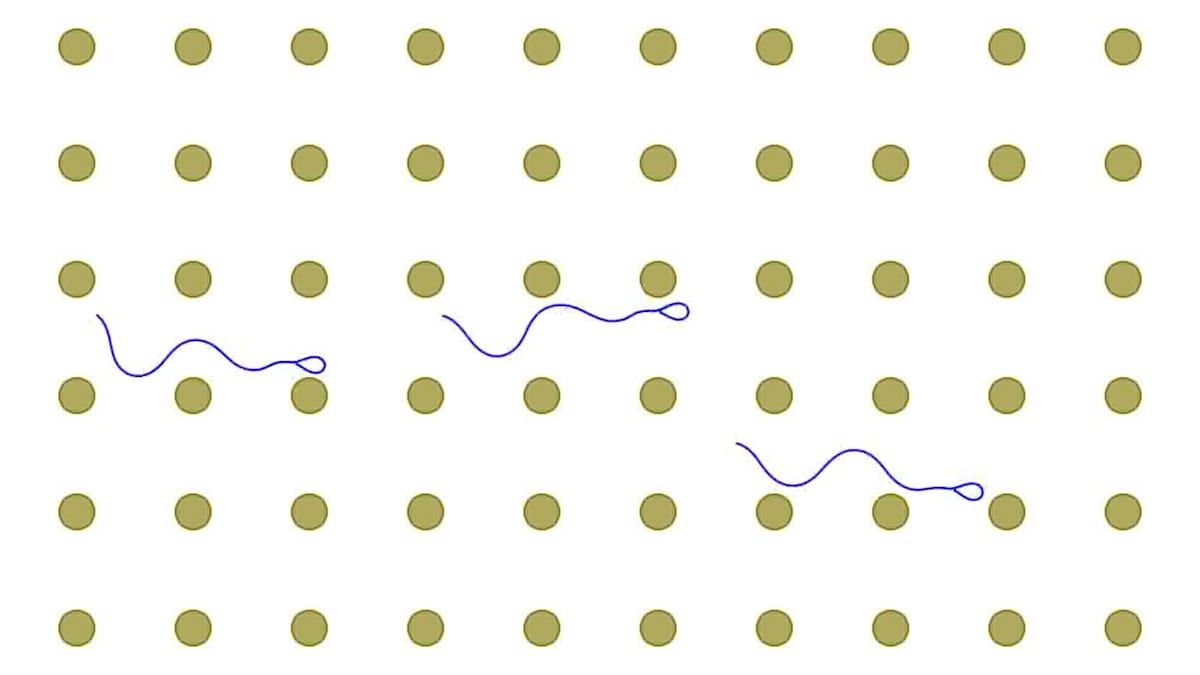
Fertility treatment could soon become more effective after scientists developed an ‘assault course’… for sperm.
It uses an obstacle course to separate the ‘men from the boys’ – identifying the strongest and fastest swimmers.
Appropriately dubbed SPARTAN, after one of the most feared military forces in Ancient Greece, it uses obstacles to select the fastest and healthiest sperm.
Already available for use in the clinic, it is hoped it will be helping women to become pregnant with fewer cycles of therapy within six months.
The tiny ‘microfluidic’ device described in Advanced Science uses a field of three dimensional posts that create an obstacles for the swimming sperm.
Only the best ones get through this array the quickest and are then collected at the outlet to be used in the IVF process.
Traditional sperm-sorting methods used in treatments select sperm that are the most rapid swimmers.
But SPARTAN collects those that are the fastest and also the healthiest. This is because it culls those with malformations, such as bent necks or larger heads, which can slow their movement.
Professor Erkan Tuzel, of Worcester Polytechnic Institute (WPI), Massachusetts, said: “With SPARTAN, we not only get sperm with excellent motility, but also with normal morphology and better DNA integrity, helping families worldwide by reducing the stress of multiple IVF procedures, while potentially increasing pregnancy rates.
“This could increase patients’ chances of getting pregnant.”
One in six couples now face infertility, which is defined as being unable to conceive after a year of trying for a baby.
Male infertility is responsible for around half of cases, with low sperm motility a contributing factor.
To fertilise an egg to make a baby, sperm must swim though a cervix, uterus and fallopian tubes. Its ability to do so quickly is known as motility.
Reduced sperm mobility makes it harder for sperm to swim to the egg, making conception less likely.
SPARTAN is just 4 millimeters wide and 12 to 16 millimeters long. Sperm are simply injected into one end and the fastest and healthiest are collected on the opposite side for immediate use in IVF.
It also prevents the type of damage to cells that can occur with traditional sorting methods, such as those using high-force centrifuges.
As SPARTAN can be used in the fertility clinic, sperm do not need to be frozen and shipped to a lab for processing. The sorting procedure takes between only between 5 and 30 minutes in the clinic.
It also could mean patients will spend less money overall on IVF treatments, which generally cost about $15,000 (£11,000) per cycle, by conceiving without going through as many treatment cycles.
Prof Tuzel, who develops computational models of swimming organisms at the microscale, designed SPARTAN himself.
He used mathematical formulas, or algorithms, and fluid physics to model human sperm and how they move in such a complex environment.
Based on his theories a team at Stanford University, California, led by Prof Utkan Demirci created the SPARTAN (Simple Periodic ARray for Trapping And IsolatioN) prototype.
Prof Tuzel said: “As a physicist, this is very exciting. We are going to have a product in the market helping people. That doesn’t always happen in physics in such a short time frame, especially if you are a theoretical physicist.”
Prof Demirci said the collaborative work enabled the research teams to create a new technology that can have a real impact at the clinic, potentially leading all the way to live births.
He added: “WPI brings an outstanding theoretical tool that allows us to understand how microscale objects, such as sperm, interact with their environment.
“We are able to design this know-how into real microfluidic devices, clinically validate what we designed and experimentally improve it into a real-world application.”
DxNow, Inc., a Maryland based company that develops advanced microfluidic and imaging technologies, has already licensed the patent for SPARTAN.
The company plans to apply for approval from the US Food and Drug Administration and expects to release the device for commercial use in July.
According to the Centres for Disease Control and Prevention, 12 percent of women in the United States between the ages of 15 and 44 deal with infertility issues. In that same age group, 7.3 million American women have used infertility services.
The National Institutes of Health reports one in three infertility cases are caused by male reproductive issues, and another third by a combination of male and female reproductive issues or unknown causes.
https://www.thelondoneconomic.com/lifestyle/stomach-cancer-sufferer-given-50-chance-survival-climb-mount-kilimanjaro/17/08/